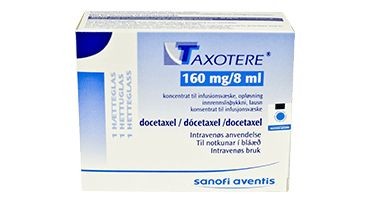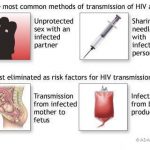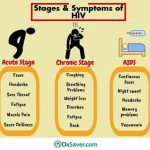
Contents
- 1 Docetaxel (Taxotere, Docefrez)
- 1.1 Ovarian Cancer
- 1.2 Skin Cancer
- 1.3 Lung Cancer
- 1.4 Prostate Cancer
- 1.5 Breast Cancer
- 1.6 Gastroesophageal Junction Adenocarcinoma
- 1.7 What Should I Do After an Unwanted Pregnancy?
Docetaxel (Taxotere, Docefrez)
Docetaxel is a drug used to treat breast cancer. It works by attacking cancer cells. Each cell in the body has a supporting structure called the microtubular network. Docetaxel makes the microtubular network in cancer cells unnaturally stiff, preventing their growth.
Brand names for docetaxel
Availability of docetaxel as a generic drug
Is docetaxel available as a generic drug? No.
Prescription requirement for docetaxel
Uses of docetaxel
Docetaxel is primarily prescribed to treat breast cancer. It is also a second-line treatment for non-small cell lung cancer, prostate cancer, gastric adenocarcinoma, and squamous cell carcinoma of the head and neck.
Side effects of docetaxel
Common side effects of docetaxel include changes in taste, shortness of breath, constipation, decreased appetite, changes in fingernails or toenails, swelling of hands, face, or feet, weakness or tiredness, joint and muscle pain, nausea and vomiting, diarrhea, mouth or lip sores, hair loss, rash, redness and tearing of the eye, and skin reactions at the site of administration. Leakage of docetaxel into tissues can cause tissue damage.
If you experience any side effects that bother you or do not go away, inform your doctor. This is not a complete list of side effects. For more information, consult your doctor or pharmacist.
Dosage of docetaxel
Docetaxel is administered intravenously. The dosage ranges from 60 mg/m2 to 100 mg/m2 every 3 weeks, in combination with other chemotherapy agents. Dexamethasone is given prior to docetaxel to reduce fluid retention and hypersensitivity reactions.
Drug and supplement interactions with docetaxel
Drugs that reduce liver enzyme activity can increase blood levels of docetaxel and its side effects. Examples include ketoconazole, erythromycin, and protease inhibitors such as ritonavir.
Safety of docetaxel during pregnancy and breastfeeding
Docetaxel can harm unborn babies. Women of childbearing potential should use contraception during treatment. Nursing mothers should stop breastfeeding before taking docetaxel.
Other information about docetaxel
Available forms of docetaxel
Injection Concentrate: 20 mg/0.5 ml, 80 mg/2 ml; Injection (Powder): 20 mg/vial, 80 mg/vial
Storage recommendations for docetaxel
Docetaxel concentrate should be stored between 2 C and 25 C (36 F to 77 F), and the powder should be stored between 2 C and 8 C (36 F and 46 F). Keep them in their original package to protect from light.
Summary
Docetaxel (Taxotere, Docefrez) is a medication primarily prescribed for breast cancer. It is also used for non-small cell lung cancer, prostate cancer, gastric adenocarcinoma, and squamous cell carcinoma of the head and neck. Before taking this medication, review its side effects, drug interactions, dosage, and pregnancy safety information.
Related Disease Conditions
Ovarian Cancer
Ovarian cancer includes various types, with epithelial carcinoma being the most common. Risk factors include a family history of ovarian cancer. Symptoms may include abdominal pain, nausea, diarrhea, constipation, and abnormal vaginal bleeding. Early diagnosis is important for successful treatment.
Skin Cancer
Skin cancer occurs when skin cells become malignant and form tumors. Basal cell carcinoma and squamous cell carcinoma are the most common types, which are highly curable when detected and treated early. Risk factors include sun exposure, tanning beds, a weakened immune system, radiation exposure, and certain viral infections. Treatment options include surgery or radiation.
Lung Cancer
Lung cancer is the leading cause of cancer deaths. Eight out of 10 cases are due to tobacco smoke. It is classified as either small-cell or non-small-cell lung cancer.
Prostate Cancer
Prostate cancer is the second most common cancer in men after skin cancer. Risk factors include age, family history, ethnicity, and diet. Diagnosis involves a digital rectal exam, prostate-specific antigen (PSA) test, and prostate biopsy. Symptoms may include frequent urination, incontinence, pain, blood in the urine, and fatigue. Treatment options depend on cancer staging and may include surgery, radiation, cryotherapy, and other approaches.
Breast Cancer
Breast cancer is an invasive tumor that develops in the mammary gland. It is detected through mammograms, self-examination, biopsy, and specialized testing. Treatment may involve surgery, radiation, hormone therapy, chemotherapy, and targeted therapy. Risk factors can be managed to reduce the risk of developing breast cancer. Breast cancer is the most common cancer among American women, with one in eight women developing it. Early detection is crucial for successful treatment.
Gastroesophageal Junction Adenocarcinoma
Gastroesophageal junction adenocarcinoma is cancer that forms where the esophagus joins the stomach. It is more likely to develop in individuals with GERD and Barrett’s esophagus. Symptoms include difficulty swallowing, weight loss, black stool, cough, nausea, and vomiting. Treatment options include surgery, chemotherapy, radiation therapy, immunotherapy, and targeted therapy.
What Should I Do After an Unwanted Pregnancy?
There are various options to consider when facing an unwanted pregnancy. Visualize each option and reach out to professionals or friends for support if needed.


